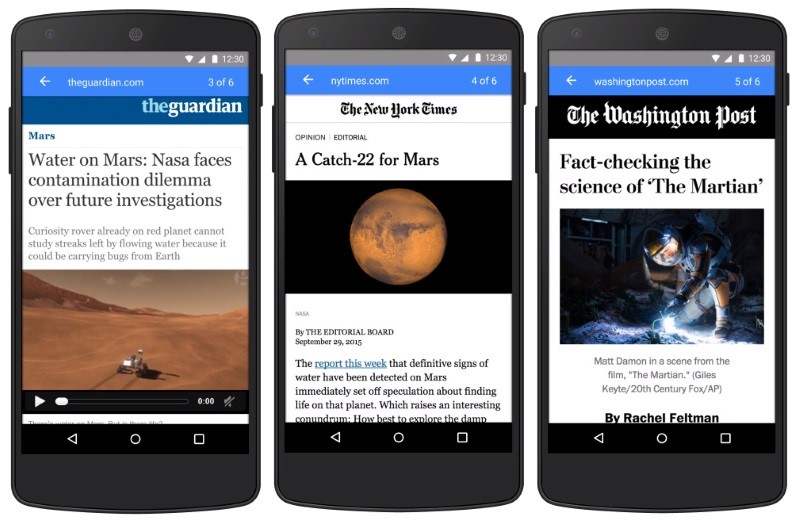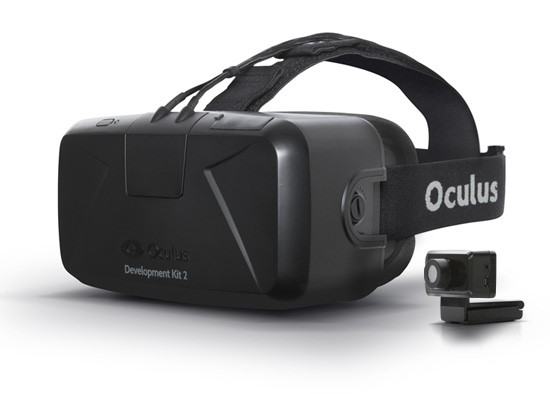There is always something new in marketing, and it’s no surprise that current trends are technology heavy. Below we examine two mega-trends: the mobile-friendly user experience and the rise of virtual reality.
Trend #1 – Mobile 1st Experiences
The importance of mobile strategy has been written about extensively, but many organizations continue to lag behind. Making sure your site is mobile-friendly is increasingly important, as Google and Facebook unveil two new mobile technologies.
1. Accelerated Mobile Page (AMP)
AMP is a new web page protocol designed to make page load faster across mobile devices. It relies on an open-source HTML variant and can be used with almost any content management system.
Google is AMP’s main backer, and they’ve already announced plans for another algorithm update to increase the rankings of mobile-friendly content. As evidence of its importance to Google, they’ve convinced big name publishers like the The Atlantic to adopt AMP. They have also released a WordPress plugin to make it easy for any-sized company to adopt the protocol. Google is set to release an updated algorithm in May that gives AMP content higher value, while punishing pages that aren’t mobile-optimized.
You can make sure that your site meet’s Google’s mobile-friendly standards here.

2. Facebook Instant Articles
Instant Articles launched in 2015 and have been rapidly adopted by publishers like National Geographic. The tool allows publishers to create multi-media, interactive articles that are hosted through Facebook’s servers. Instant Articles are important because they show a commitment by Facebook to faster content loads and they are pushing content producers to keep up. On average, Instant Articles load 10 times faster than standard media and have higher reader retention rates. Expect Instant Articles to get preferential treatment in NewsFeed, and to become the standard for most major publishers. Facebook will make Instant Articles available to everyone in 2016, which means this will likely reshape Facebook marketing strategies for many.
Trend #2 – Virtual Reality
This is the year virtual reality becomes a consumer reality. You’ve probably heard about Oculus Rift, the VR company that Facebook bought for $2 billion and that’s started shipping its virtual reality headsets. And you might have seen videos of Microsoft’s HoloLens, a holographic computer you wear on your head. Other big names including HTC, Samsung, and Sony all have VR products for household consumption on the market or coming soon as well.

Research suggests that VR will be a $15 billion industry by 2020 and companies are already trying to grab market share. Immersion in virtual reality will open up new ways to view, demo and discuss products. For example, virtual fitting rooms are already a reality and you can expect more of the shopping experience to translate to VR in the coming years. It’s not only about technology: content players like the New York Times are changing their offerings to take advantage. NYT now has immersive, virtual news coverage you can view through your smartphone using Google’s Cardboard virtual reality viewer.
As this relatively new technology picks up steam, we will see the need for VR compatible marketing increase. While big players are still trying to figure out what this means for their marketing strategies, expect VR to one day have an impact on the marketing strategies of start-ups and small businesses.
These Trends Are Not “Trendy”
Some trends last only a few months or couple of years (looking at you QR codes), but sometimes trends represent a major and permanent shift in how marketing works. The amplifying of the mobile-first perspective and the advent of VR as a consumer product are both trends that will change marketing permanently. Make sure you are thinking about how these trends will change your business because they are NOT going away.
